- Home
- Fyodor Dostoyevsky
The Gambler and Other Stories (Penguin ed.)
The Gambler and Other Stories (Penguin ed.) Read online
PENGUIN CLASSICS
THE GAMBLER AND OTHER STORIES
FYODOR MIKHAYLOVICH DOSTOYEVSKY was born in Moscow in 1821, the second of a physician’s seven children. When he left his private boarding school in Moscow he studied from 1838 to 1843 at the School of Military Engineering in St Petersburg, graduating with officer’s rank. His first novel to be published, Poor Folk (1846), was a great success. In 1849 he was arrested and sentenced to death for participating in the Petrashevsky Circle; he was reprieved at the last moment but sentenced to penal servitude, and until 1854 he lived in a convict prison at Omsk, Siberia. Out of this experience he wrote The House of the Dead (1861–2). In 1861 he began the journal Vremya (Time) with his brother; in 1862 and 1863 he went abroad, where he strengthened his anti-European outlook, met Apollinaria Suslova, who was the model for many of his heroines, and gave way to his passion for gambling. In the following years he fell deeply in debt, but in 1867 he married Anna Grigoryevna Snitkina (his second wife), who helped to rescue him from his financial morass. They lived abroad for four years, then in 1873 he was invited to edit Grazhdanin (Citizen), to which he contributed his Writer’s Diary. From 1876 the latter was issued separately and had a large circulation. In 1880 he delivered his famous address at the unveiling of Pushkin’s memorial in Moscow; he died six months later in 1881. Most of his important works were written after 1864: Notes from Underground (1864), Crime and Punishment (1865–6), The Gambler (1866), The Idiot (1868), Demons (1871–2) and The Brothers Karamazov (1880).
RONALD MEYER teaches Russian literary translation at Columbia University. He is the editor of the Penguin edition of Dostoyevsky’s Demons, translated by Robert A. Maguire (2008), and Anna Akhmatova’s My Half-Century: Selected Prose (1992); co-translator, with David Lowe, of The Complete Letters of Fyodor Dostoyevsky, volume 1 (1988); and co-editor of Russian Literature of the 1920s: An Anthology (1987). His other translations include works by Babel, Chekhov, Gogol, Lipkin, Nagibin and Palei.
FYODOR
DOSTOYEVSKY
The Gambler
and Other Stories
Translated with an Introduction
and Notes by RONALD MEYER
PENGUIN BOOKS
PENGUIN CLASSICS
Published by the Penguin Group
Penguin Books Ltd, 80 Strand, London WC2R 0RL, England
Penguin Group (USA) Inc., 375 Hudson Street, New York, New York 10014, USA
Penguin Group (Canada), 90 Eglinton Avenue East, Suite 700, Toronto, Ontario, Canada M4P 2Y3 (a division of Pearson Penguin Canada Inc.)
Penguin Ireland, 25 St Stephen’s Green, Dublin 2, Ireland (a division of Penguin Books Ltd)
Penguin Group (Australia), 250 Camberwell Road, Camberwell, Victoria 3124, Australia
(a division of Pearson Australia Group Pty Ltd)
Penguin Books India Pvt Ltd, 11 Community Centre, Panchsheel Park, New Delhi – 110 017, India
Penguin Group (NZ), 67 Apollo Drive, Rosedale, North Shore 0632, New Zealand
(a division of Pearson New Zealand Ltd)
Penguin Books (South Africa) (Pty) Ltd, 24 Sturdee Avenue, Rosebank, Johannesburg 2196, South Africa
Penguin Books Ltd, Registered Offices: 80 Strand, London WC2R 0RL, England
www.penguin.com
‘White Nights’ and ‘A Christmas Party and a Wedding’ first published 1848
‘A Nasty Business’ first published 1862
The Gambler first published 1866
‘Bobok’ first published 1873
‘The Meek One’ first published 1876
‘The Dream of a Ridiculous Man’ first published 1877
This translation first published in Penguin Classics 2010
Translation and editorial material copyright © Ronald Meyer, 2010
All rights reserved
The moral right of the translator and editor has been asserted
Except in the United States of America this book is sold subject to the condition that it shall not, by way of trade or otherwise, be lent, re-sold, hired out, or otherwise circulated without the publisher’s prior consent in any form of binding or cover other than that in which it is published and without a similar condition including this condition being imposed on the subsequent purchaser
ISBN: 978-0-14-194357-2
Contents
Chronology
Introduction
Further Reading
A Note on the Text and the Translation
The Gambler and Other Stories
White Nights
A Christmas Party and a Wedding
A Nasty Business
The Gambler
Bobok
The Meek One
The Dream of a Ridiculous Man
Notes
Appendices
I Names in Russian
II Table of Ranks
III A Note about Money in The Gambler
Chronology
1821 (30 October)* Born Fyodor Mikhaylovich Dostoyevsky, in Moscow, the son of Mikhail Andreyevich, head physician at Mariinsky Hospital for the Poor, and Marya Fyodorovna, daughter of a merchant family.
1823 Pushkin begins Eugene Onegin.
1825 Decembrist uprising.
1831–6 Attends boarding schools in Moscow together with his brother Mikhail (b. 1820).
1836 Publication of the ‘First Philosophical Letter’ by Pyotr Chaadayev.
1837 Pushkin is killed in a duel.
Mother dies. He and his brother Mikhail are sent to a boarding school in St Petersburg.
1838 Enters the St Petersburg Academy of Military Engineering as an army cadet (Mikhail is not admitted to the Academy).
1839 Father dies, perhaps murdered by serfs on his estate.
1840 Lermontov’s A Hero of Our Time.
1841 Obtains a commission. Tries his hand at historical drama without success.
1842 Gogol’s Dead Souls.
Promoted to second lieutenant.
1843 Graduates from the Academy. Attached to St Petersburg Army Engineering Corps. Translates Balzac’s Eugénie Grandet.
1844 Resigns his commission. Works on Poor Folk, his first novel.
1845 Establishes a friendship with Russia’s most prominent and influential literary critic, the liberal Vissarion Belinsky, who praises Poor Folk and acclaims its author as Gogol’s successor.
1846 Poor Folk and The Double published. While Poor Folk is widely praised, The Double is much less successful. ‘Mr Prokharchin’ also published.
1847 Nervous ailments and the onset of epilepsy. ‘A Novel in Nine Letters’ and ‘The Landlady’ are published.
1848 Revolutions in Europe.
Several short stories published, including ‘A Weak Heart’, ‘An Honest Thief’, ‘A Christmas Party and a Wedding’ and ‘White Nights’.
1849 Netochka Nezvanova published. (23 April) Arrested along with other members of the Petrashevsky Circle, and convicted of political offences against the Russian state. Sentenced to death, and taken out to Semyonovsky Square to be shot by firing squad, but reprieved moments before execution (22 December). Instead, sentenced to an indefinite period of exile in Siberia, to begin with eight years of penal servitude, later reduced to four years by Tsar Nicholas I.
1850 Prison and hard labour in Omsk, western Siberia.
1852 Death of Gogol.
1853 Outbreak of Crimean War.
1854 Released from prison, but immediately sent to do compulsory military service as a private in the infantry battalion at Semipalatinsk, south-western Siberia.
1855 Alexander II succeeds Nicholas I as Tsar; some relaxation of state censorship.
Promo
ted to non-commissioned officer.
1856 Promoted to lieutenant. Still forbidden to leave Siberia.
1857 Marries the widowed Marya Dmitriyevna Isayeva. Publication of ‘The Little Hero’, written in prison during the summer of 1849.
1859 Allowed to return to live in European Russia. (December) The Dostoyevskys return to St Petersburg. The Village of Stepanchikovo and its Inhabitants and Uncle’s Dream published.
1861 (19 February) Emancipation of serfs.
Mikhail starts a new literary journal, Vremya (Time). Dostoyevsky is not officially an editor, because of his convict status. The Insulted and the Injured and first part of The House of the Dead both appear in Vremya.
1862 ‘A Nasty Business’ and second part of The House of the Dead published in Vremya. Makes first trip abroad, to Europe, including England, France and Switzerland. Meets Alexander Herzen in London.
Turgenev’s Fathers and Sons.
1863 Polish uprising. Nikolay Chernyshevsky’s What Is to Be Done?
Winter Notes on Summer Impressions published in Vremya, which is shut down by the government later this year. After Marya Dmitriyevna is taken seriously ill, travels abroad again. Begins liaison with Apollinaria Suslova.
1864 (March) With Mikhail founds the journal Epokha (Epoch) as successor to Vremya. Notes from Underground published in Epokha. (April) Death of Marya Dmitriyevna. (July) Death of Mikhail.
1865 Epokha ceases publication because of lack of funds. Suslova rejects his proposal of marriage. Gambles in Wiesbaden. Works on Crime and Punishment.
1865–9 Tolstoy’s War and Peace.
1866 Dmitry Karakozov attempts to assassinate Tsar Alexander II.
Crime and Punishment in the Russian Messenger, and The Gambler published. The latter written in 26 days with the help of his future wife, the stenographer Anna Grigoryevna Snitkina (b. 1846).
1867 Marries. Hounded by creditors, the couple leaves for Western Europe and settles in Dresden.
1868 Birth of daughter, Sofia, who dies only three months old. The Idiot published in serial form.
1869 Birth of daughter, Lyubov.
1870 Vladimir Lenin is born in the town of Simbirsk, on the banks of the Volga. Defeat of France in Franco-Prussian War.
The Eternal Husband published.
1871 Moves back to St Petersburg with his wife and family. Birth of son, Fyodor.
1871–2 Serial publication of Demons.
1873 Becomes contributing editor of conservative weekly journal Grazhdanin (Citizen), where his A Writer’s Diary is published as a regular column. ‘Bobok’ appears in the issue of 5 February.
1874 Steps down as the editor of the Citizen.
1875 Tolstoy begins publishing Anna Karenina.
The Adolescent published. Birth of son, Alexey.
1876 A Writer’s Diary restarts as an independent publication; ‘The Meek One’ appears in it in November.
1877 ‘The Dream of a Ridiculous Man’ published in A Writer’s Diary in April.
1878 Death of Alexey.
1879 First part of The Brothers Karamazov published. Struggling with bad health, Dostoyevsky visits the health spa in Bad Ems, Germany, in the summer for treatment.
1880 The Brothers Karamazov published (in complete form). Anna starts a book service, where her husband’s works may be ordered by mail. His ‘Pushkin Speech’ delivered in Moscow at the unveiling of a monument is greeted with wild enthusiasm; the speech is published in A Writer’s Diary, which resumes publication.
1881 (1 March) Assassination of Tsar Alexander II.
(28 January) Dostoyevsky dies in St Petersburg. The funeral procession from the author’s apartment numbers over 30,000. Buried in the cemetery of the Alexander Nevsky Monastery.
Introduction
New readers are advised that this Introduction makes details of the plots explicit.
‘MONEY IS EVERYTHING!’ – THE GAMBLER
On 4 October 1866, Dostoyevsky was faced with yet another financial crisis. As his letters make abundantly clear, he was dogged by money problems throughout his adult life, from the time he was away at school, imploring his father for money (‘I’m in debt all the way around and very much. I owe at least 50 roubles. My God! … Save me’1) until a year before his death, when his wife had finally managed to pay off the debts accumulated over a lifetime. What was different about the present crisis was that he was enjoying unprecedented success with the serialization of Crime and Punishment, which had secured his stature as one of the leading writers in Russia, along with Leo Tolstoy and Ivan Turgenev. Nevertheless, he found himself besieged by creditors. And though he had been in desperate straits before, it was different this time – he needed to write and deliver a novel in twenty-six days or forfeit the rights to his works for the next nine years.
The troubles had begun the previous year. In July 1865 Dostoyevsky agreed to one of the most infamous publishing contracts in the history of Russian literature with the publisher and bookseller Fyodor Stellovsky, whose name lives on solely from this one agreement. Dostoyevsky had established the journal Epoch (Epokha) the year before with his brother Mikhail, who died a few months later. Dostoyevsky unwisely decided to assume responsibility both for Mikhail’s personal debts and those he had accumulated from the journal. Despite Dostoyevsky’s very real efforts to keep Epoch afloat, it went under in March 1865 from financial problems. Now the sole support of six people (his stepson, Mikhail’s widow and her four children), Dostoyevsky found himself in a truly impossible situation. He put off dealing with Stellovsky as long as he could, but there was no alternative. According to the contract, the unscrupulous publisher acquired the rights to publish a three-volume collection of Dostoyevsky’s works; moreover, the author was obligated to write a new short novel specifically for this edition. If Dostoyevsky failed to produce the promised work on schedule (1 November 1866) the publisher had the right to publish all of Dostoyevsky’s works without any royalty payment whatsoever for the next nine years. Knowing that he was perhaps signing away his past as well as his future, Dostoyevsky agreed and took the 3,000 roubles Stellovsky offered. After paying off his most urgent debts and providing for his dependants, he was left with the far from princely sum of 175 roubles, which he took with him abroad later that month and promptly gambled away at the roulette tables in Wiesbaden, while his lover Apollinaria Suslova waited for him in Paris.
The following summer, in a letter to Anna Korvin-Krukovskaya, whom he courted after the death of his wife in 1864, Dostoyevsky, who had not written a word of the contracted novel, complained that Stellovsky refused to give him an extension. He then went on to boast that he wanted:
to do an unprecedented and unconventional thing: write 30 signatures [i.e. 480 printed pages] in four months, in two different novels, of which I’ll work on one in the morning, and the other in the evening and finish on time … I’m convinced that not one of our writers, past or living, wrote under the conditions in which I constantly write. Turgenev would die from the very thought.2
However, the idea of writing two novels simultaneously, that is, Crime and Punishment, which was being serialized in the Russian Messenger, and the as yet unnamed second novel, came to naught. And so with only a month left, Dostoyevsky decided, on the recommendation of a friend, to enlist the services of a stenographer. The twenty-year-old Anna Grigoryevna Snitkina (who would become his second wife) arrived at 11:30 on the morning of 4 October to take down in shorthand his new novel, The Gambler.
Years later Anna Grigoryevna would recall that the building she had entered resembled Raskolnikov’s lodgings in Crime and Punishment – she was an ardent admirer of the writer. The two quickly worked out a routine where Anna Grigoryevna would take his dictation during the afternoon and then transcribe a fair copy at home in the evening. Long tea-breaks provided an opportunity for the writer to entertain her with dramatic episodes from the story of his life: arrested in 1849 for his participation in a political discussion group, sentenced to death by firing squad,
last-minute reprieve while awaiting execution on Semyonovsky Square, prison, exile in Siberia. And then there was his literary career: the famous debut with his novel Poor Folk, friendships with Vissarion Belinsky, the foremost literary critic of the day, as well as the poets Nikolay Nekrasov and Apollon Maykov (the latter visited during one of their working afternoons) … In her memoirs, Anna Grigoryevna writes that ‘the very idea, not only of meeting this gifted writer, but also of helping him in his work, filled me with excitement and elation … With each passing day Dostoyevsky was growing kinder and warmer toward me. He often addressed me as golubchik [darling], his favourite expression.’3 Remarkably, the novel was finished and delivered to Stellovsky on the deadline. Dostoyevsky proposed marriage to Anna a week later, and they were married in February of the next year.
Even though the actual writing of The Gambler took all of twenty-six days from start to finish, Dostoyevsky had been mulling over the work for quite some time. He outlined it in a letter dated 18 September 1863:
The plot of the story is the following: a certain type of Russian living abroad. Note: there was a big question about Russians living abroad in the journals this summer. That will all be reflected in my story. And in general, the whole contemporary moment of our inner life will be reflected … The main point is that all his life juices, energies, violence, boldness have gone into roulette. He is a gambler, and not an ordinary gambler, just as Pushkin’s miserly knight is not an ordinary knight …
If House of the Dead drew the attention of the public as a portrait of convicts, whom no one had portrayed graphically before House of the Dead, then this story will definitely draw attention as a GRAPHIC and very detailed portrait of the game of roulette.4
While the comparison with the House of the Dead might first strike one as forced or even outrageous, the casino does represent another type of closed, special world, in which one needs to be initiated into new rules of conduct in order to survive. We learn these rules from reading Alexey Ivanovich’s ‘notes’ and following his career as a gambler; as Dostoyevsky wrote in that same letter, he is ‘a poet in his own way’.

 The Eternal Husband
The Eternal Husband Crime and Punishment
Crime and Punishment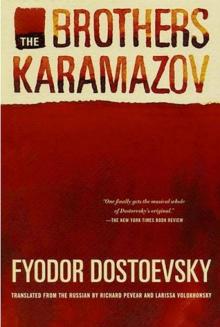 The Brothers Karamazov
The Brothers Karamazov Notes From Underground
Notes From Underground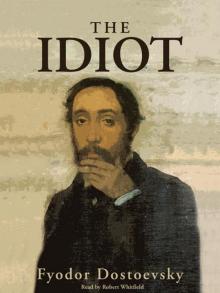 The Idiot
The Idiot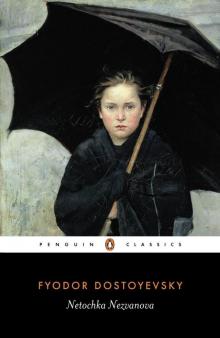 Netochka Nezvanova (Penguin ed.)
Netochka Nezvanova (Penguin ed.) The Gambler
The Gambler The Double
The Double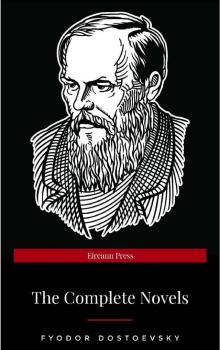 Poor Folk Anthology
Poor Folk Anthology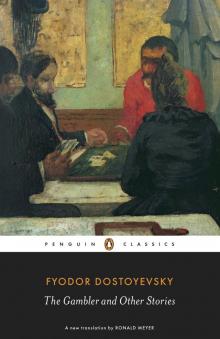 The Gambler and Other Stories (Penguin ed.)
The Gambler and Other Stories (Penguin ed.) Prestuplenie i nakazanie. English
Prestuplenie i nakazanie. English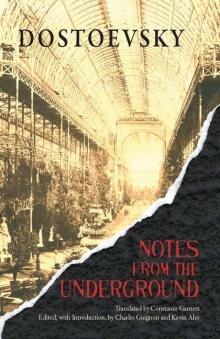 Notes from the Underground
Notes from the Underground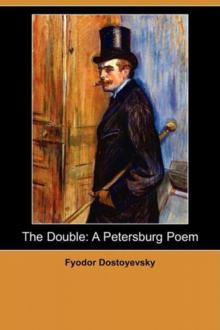 The Double: A Petersburg Poem
The Double: A Petersburg Poem White Nights and Other Stories / The Novels of Fyodor Dostoevsky, Volume X
White Nights and Other Stories / The Novels of Fyodor Dostoevsky, Volume X Complete Works of Fyodor Dostoyevsky
Complete Works of Fyodor Dostoyevsky Poor Folk and Other Stories
Poor Folk and Other Stories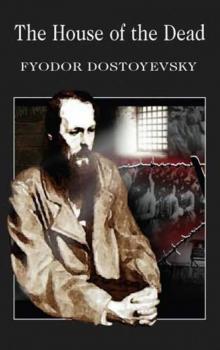 The House of the Dead
The House of the Dead